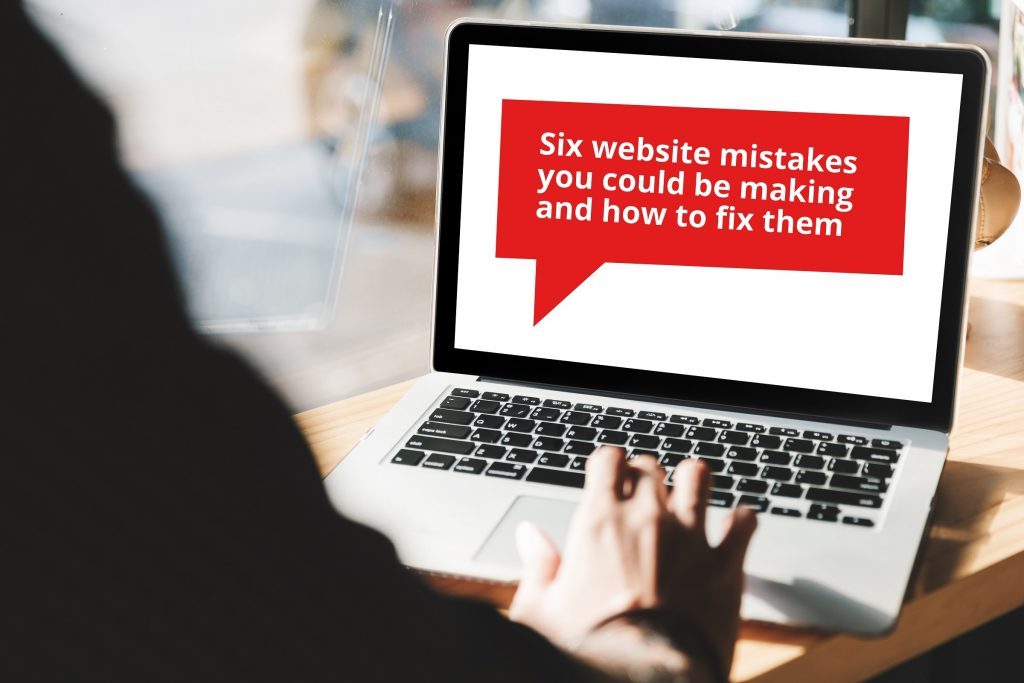
Six of the many ways your website could be holding back your business
27th November 2018It only takes 50 milliseconds for a user to form an opinion of a website that determines whether they will stay or leave.
This means that, more than ever, websites need to make an immediate, positive impact on visitors or you could risk losing out on business. Read on to find out what website mistakes you could be making, and how fixing them could drastically improve your company’s outlook.
- Your website is visually unappealing
Failing to make a visual impact will cause potential clients to click away from your website. In fact, 75% of web users make judgements about a website’s credibility based on how it looks. For most clients, the first contact they’ll have with a company will be through its website, so a consistent colour scheme, combined with a coherent layout, eye-catching imagery and clear messages, will all help to make that crucial first impression a positive one.
Indeed, the use of imagery that adheres to a consistent, well-thought-out theme across your site is one of the best ways to make more of an impact. And imagery doesn’t just refer to photographs – increasingly, companies are using infographics, illustrations and icons on their websites to present information and data in an aesthetically pleasing, easily digestible and memorable way.
- There’s too much text
What’s more, with people increasingly choosing to consume information through visual means, a website with paragraphs of dense text is not going to provide the instant access to information that modern web users require. Enter video, one of the biggest and fastest-growing trends on the web. To provide some examples of how important video content has become, the video sharing site YouTube is now the second biggest search engine after Google, while Cisco reported that video accounted for 73% of all internet traffic in 2016, and predicted that this will rise to 82% by 2021.
The bottom line: companies using video content on their websites command a greater share of web traffic and enjoy a higher position in the search engine rankings, appealing to the growing segment of internet users who consume hours of online video content on a daily basis.
- Users can’t find what they’re looking for
If your website is difficult to use or navigate, then potential clients might simply search for another website where they can find what they’re looking for more easily. If it’s not immediately obvious to users how they can access the page they want, then you could be missing out on a lot of potentially lucrative traffic.
Identifying your website’s most important pages (by setting up and monitoring your Google Analytics account*) and creating a sitemap (a list of all the pages on your website and how they can be accessed) are some first important steps towards creating a logical navigational structure that will greatly improve your website’s usability. Including a ‘breadcrumb’ in your website design, which enables users to track the path they’ve taken to reach a certain webpage, could also make your website much easier to navigate.
*We can help if you’re not sure about how to do this.
- You haven’t updated your site in…a while
Failing to update your website could also be holding you back. This doesn’t just mean ensuring that details such as contact information are up-to-date. Potential clients will be able to tell that your content isn’t fresh in other ways. If your last blog post was a year ago, or you have an embedded social media feed showing posts that are weeks or even months apart, this will give visitors to your website the impression that you aren’t making an effort to maintain it. And if you don’t care about your website, they may ask, do you care about your company?
- Your website doesn’t rank highly enough in the search engine results
You’ve heard the old adage ‘content is king’. Fresh content containing relevant keywords relating to your industry is essential if you want to climb up the search engine rankings. Search engines send software programs called ‘crawlers’ around the internet looking for content and data that wasn’t there previously, using this information to rank websites in the search results according to their perceived relevance. The more regularly you post fresh content, the more relevant you become, and the higher you’ll appear in the search results. An excellent way to regularly post fresh, optimised content containing strong keywords is to start a blog.
SEO has now become so much more than just content and keywords, however. Your search engine rankings will also be affected by the number of links to your website from other sites, the speed at which your pages load, how long users are spending on each webpage, how responsive your website is, and myriad other factors that all combine to have a knock-on effect on where you’ll appear on the results page.
- Speaking of responsive…
The practice of designing websites so that they can be viewed on mobile devices and tablets is called responsive design, and it is now an absolute must if you want to attract business online. An overwhelming 52% of global web traffic now comes from mobile devices, so it is absolutely essential to ensure that your website is designed to cater for this huge segment of consumers.
If you don’t know whether your website is device-friendly, there are a multitude of tools to help you find out. However, the quickest way is to view your website on a smartphone and see what it looks like!
We can help
We have a wealth of experience in designing and building websites, from the straightforward to the very large and complex. For more information, call us on 01279 657555, or email info@tomd.co.uk.
By Chloe Wingate
